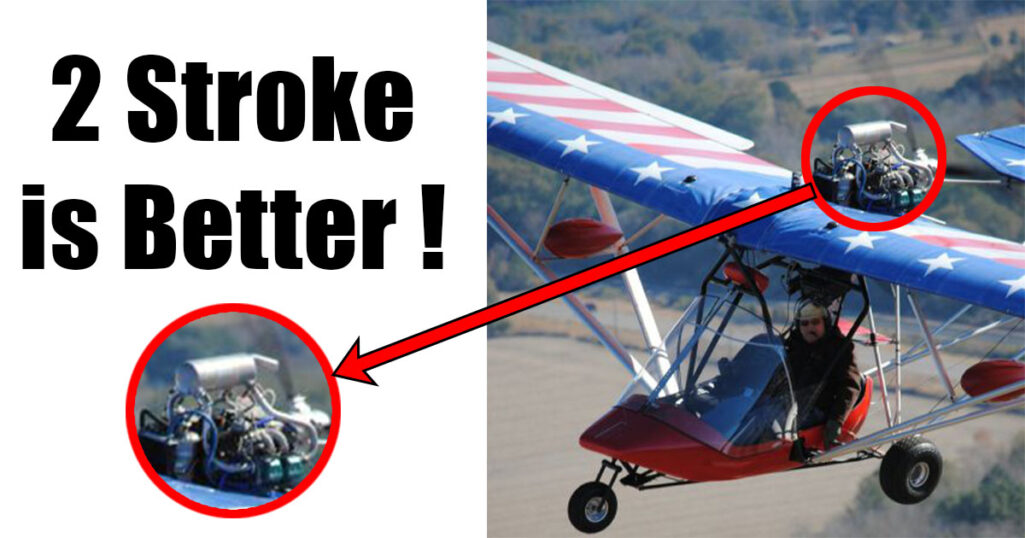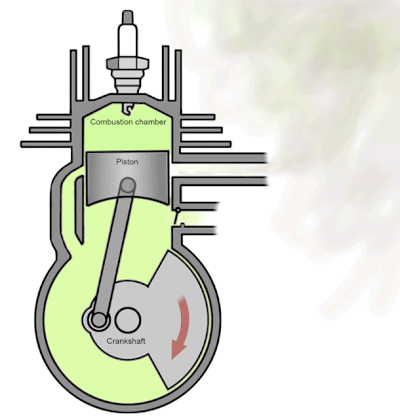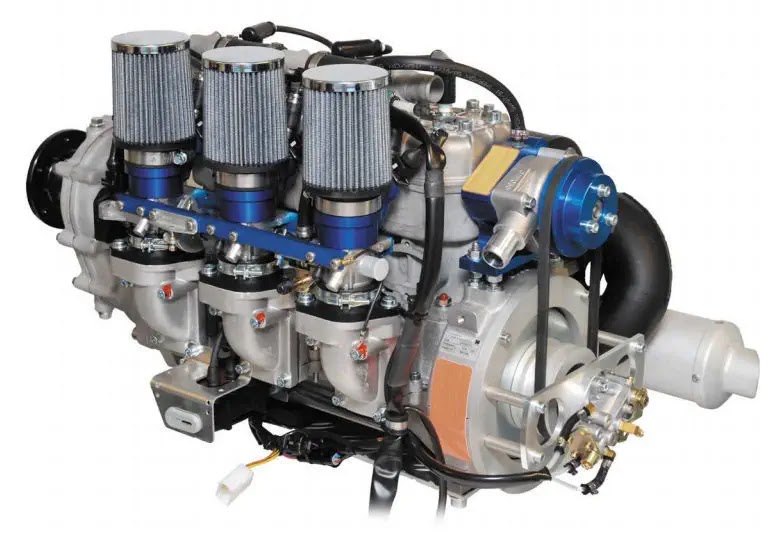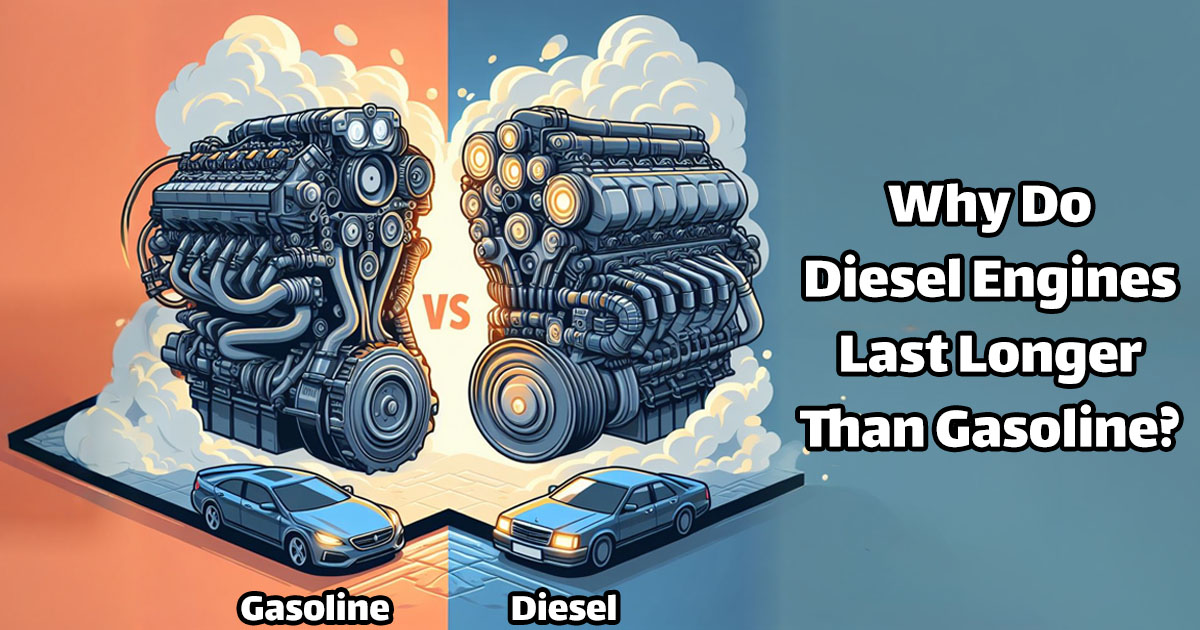
Two-stroke engines are a type of internal combustion engine that is no longer commonly used than the four-stroke engine. However, it is still popular and widely used in light and ultralight aircraft. Let’s find out why…
Advantages of Two Stroke Engine For Aircrafts

Light Weight:
Ultralight aircraft is all about reducing the weight of the aircraft. Approximately 40% of the weight of the entire plane would be used by the engine.
As a result, a more realistic weight for an ultra-light engine is between 50 and 60 pounds. Cutting down on moving parts makes it feasible to build engines with weights like these. Typically, two-stroke engines are used in this situation.
There are fewer components in two-stroke engines than in four-stroke engines, which makes them lighter.
High Power to Weight ratio:
A two-stroke engine typically weighs one-third less than a four-stroke engine of comparable output power. While this may not seem like much, ten pounds of weight savings is a blessing when attempting to trim ounces to reduce weight.
Low Cost:
Two-stroke engines are less expensive to manufacture, sell, and maintain mechanically than four-stroke engines. Repairs on a simple design are cheaper than on more complex ones. One of Rotax’s two engines is a good example of this. Overhauling the 618’s 75-horsepower two-stroke engine would cost you about $1,000 in parts. Overhauling the more powerful 912 with four cylinders and four strokes will set you back around $4000 in parts.
Wow, this seems that two-stroke is the way to go. Why don’t we implement them everywhere?! Does this means that two-stroke is the perfect engine?
Wait, there are still more things to know.
Disadvantages of Two Stroke Engine For Aircrafts

Low Reliability:
Two-stroke engines are usually subjected to unexpected shutdowns, which may be quite dangerous. In general, four-stroke engines give you signs when they’re about to go wrong. Two-stroke engines, on the other hand, are less likely to.
Because of the frequent power outages, pilots will have to do more emergency landings caused by the absence of advance warning, which is not an enjoyable experience.
High Noise:
When it comes to engine noise, it’s well-known that two-stroke engines are noisier than four-stroke engines, particularly at higher, more sensitive frequencies.
High Vibration:
Unfortunately, the shakiness and noise of two-stroke engines go hand in hand. Two-stroke engines have less mechanical damping of the types of vibrations produced by a piston traveling up and down thousands of times per second since its structure is so basic. It’s an unsteady ride, particularly at low revs.
Low Efficiency:
Usually, two-stroke engines are known to consume more fuel than a four-stroke engine while delivering the same power output.
Oil-Fuel Pre-mixing:
The oil in the gasoline serves as lubrication for a two-stroke engine. Using an oil injection system or preparing the oil yourself are the two options. Mix-it-yourself is the only option for two-stroke ultralight-legal engines. This is time-consuming, untidy, possibly toxic, and just plain unpleasant.
Even though four-stroke engines are better in many aspects than the two-stroke engine, they are still the perfect choice for light aircraft and provide the lightweight to high power output needed.
Why do light aircraft still use two-stroke engines?
Two-stroke engines are still popular in light and ultralight aircraft because these engines are usually lighter in weight and produce more power per weight. This makes it the perfect choice for aircraft that are designed to be “light.”
Do you think 2 stroke engines still have place for further future development?




